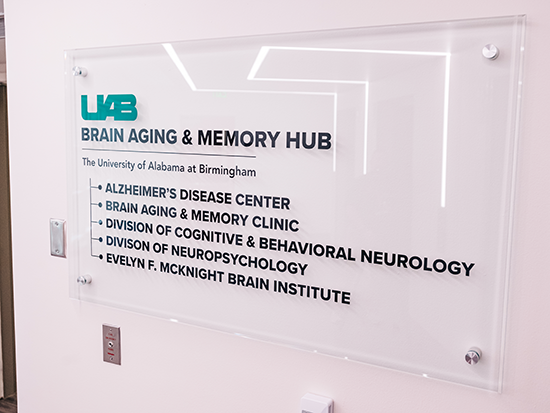 Erik Roberson, M.D., Ph.D., Rebecca Gale-Heersink endowed chair in the UAB Department of Neurology and the center director.
Erik Roberson, M.D., Ph.D., Rebecca Gale-Heersink endowed chair in the UAB Department of Neurology and the center director.
Photography: Andrea MabryThe National Institute on Aging (NIA), part of the National Institutes of Health, has awarded an estimated $21.4 million five-year grant to the University of Alabama at Birmingham for an Alzheimer’s Disease Research Center.
People born in the Deep South have a 20 percent to 30 percent higher risk of developing Alzheimer’s disease or dementia. In 2020, UAB became an exploratory ADRC to advance research in dementia disparities in the region. The new grant allows the team to extend its research efforts.
“We hope to use the data collected through the ADRC to translate research findings into advances in the care, treatment and prevention of Alzheimer’s disease and dementia,” said Erik Roberson, M.D., Ph.D., Rebecca Gale-Heersink endowed chair in the UAB Department of Neurology and the center director.
Over the past four years, the UAB team investigated new Alzheimer’s disease biomarkers, including measures in blood and eyes, new electronic measures to make cognitive testing more accessible to patients and new imaging tests for the disease. Additionally, they evaluated the effects of race and social determinants of health on dementia risks.
 In 2024, the UAB ADRC moved to the new UAB Brain Aging and Memory Hub, which was created to anticipate the increased needs of the Alzheimer’s and dementia population in Alabama.
In 2024, the UAB ADRC moved to the new UAB Brain Aging and Memory Hub, which was created to anticipate the increased needs of the Alzheimer’s and dementia population in Alabama.
Photography: Andrea Mabry“Racial disparities in dementia are a large focus of the ADRC, with the risk of late-onset Alzheimer’s disease twice as high in the Black population,” Roberson said. “But we are also investigating the question of why the Deep South as a whole has a higher risk of dementia.”
In 2024, the UAB ADRC moved to the new UAB Brain Aging and Memory Hub, which was created to anticipate the increased needs of the Alzheimer’s and dementia population in Alabama. The UAB ADRC is the only one in the four-state region of Alabama, Mississippi, Arkansas and Louisiana.
The ADRC team works closely with the UAB Integrative Center for Aging Research, UAB Neurology’s Center for Neurodegeneration and Experimental Therapeutics, Southern Research, and HudsonAlpha Institute for Technology in its endeavors to understand Alzheimer’s and dementia and how to effectively treat it.
According to the NIA, although each center has its own area of emphasis, the ADRCs also enhance research on Alzheimer’s disease as a network that shares new research ideas and approaches, as well as data (through the National Alzheimer’s Coordinating Center), biological samples (through NCRAD) and genetic information (through NIAGADS). The network also provides an infrastructure to facilitate NIA signature programs like ADNI, AMP-AD, MOVE-AD and the Alzheimer’s Clinical Trials Consortium.
The grant described here is supported by the NIH’s National Institute on Aging (P30AG086401). The content is solely the responsibility of the authors and does not necessarily represent the official views of the NIH.